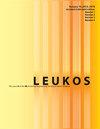优化存在感照明能源效率和用户行为需求的小型瑞典家庭
IF 2.6
2区 工程技术
Q2 CONSTRUCTION & BUILDING TECHNOLOGY
引用次数: 0
摘要
新冠肺炎疫情后,混合型工作方式变得越来越普遍,家中占用时间的延长也增加了家庭用电量。小型住宅被认为是提高住宅部门能源效率的潜力,住宅由具有动态占用行为的混合功能空间组成。这为优化小型家庭的存在感照明提供了机会,以提高能源效率和满足用户行为需求。全面概述了存在感测方法,比较了连接到家庭照明的四种类型的非可穿戴传感器。回顾文献的文献计量图直观地强化了一个重要的研究差距,即存在感研究与家庭照明无关,而是倾向于商业和机构背景。接下来,分析了适用于小型家庭住宅照明的商用存在感产品的非详尽示例,并综合了它们的一般特征和技术。文献和产品概述确定了五个重要的产品知识差距。结合收集到的信息,提出了一个概念上灵活的基于雷达的传感器(原型设计),解决了三个重要标准的愿望清单,以优化混合功能小住宅中未来的存在感照明。未来的雷达传感研究预计将开发一种预期照明系统,该系统可以处理实时多用户生命信号,为(小型)生活环境提供更智能的本地化和个性化照明选择。本文章由计算机程序翻译,如有差异,请以英文原文为准。
Optimizing Presence Sensing Lighting for Energy Efficiency and User Behavioral Needs in Small Swedish Homes
A hybrid workstyle is becoming more common post-COVID-19, and longer occupancy hours at home are increasing household electricity consumption. Small homes are regarded as a potential for improving energy efficiency in the residential sector, and a home consists of mixed-function spaces with dynamic occupancy behaviors. These underpin the opportunity to optimize presence sensing lighting in small homes for energy efficiency and user-behavioral needs. A comprehensive overview of presence sensing approaches, comparing four types of non-wearable sensors connected to home lighting is made. A bibliometric mapping of the reviewed literature visually reinforces a significant research gap that presence sensing studies were not connected to home lighting but inclined toward the commercial and institutional context. Next, a non-exhaustive example of commercially available presence sensing products applicable to residential lighting for small homes is analyzed, and their general characteristics and technologies are synthesized. The literature and product overview identified five significant product knowledge gaps. Incorporating the gathered information leads to the proposal of a conceptual flexible radar-based sensor (prototype design), addressing a wish list with three important criteria to optimize future presence sensing lighting in a mixed-function small home. Future radar sensing studies are expected to develop an anticipatory lighting system that processes real-time multi-user vital signals for smarter localized and personalized lighting options for (small) living environments.
求助全文
通过发布文献求助,成功后即可免费获取论文全文。
去求助
来源期刊

Leukos
工程技术-光学
CiteScore
7.60
自引率
5.60%
发文量
19
审稿时长
>12 weeks
期刊介绍:
The Illuminating Engineering Society of North America and our publisher Taylor & Francis make every effort to ensure the accuracy of all the information (the "Content") contained in our publications. However, The Illuminating Engineering Society of North America and our publisher Taylor & Francis, our agents, and our licensors make no representations or warranties whatsoever as to the accuracy, completeness, or suitability for any purpose of the Content. Any opinions and views expressed in this publication are the opinions and views of the authors, and are not the views of or endorsed by The Illuminating Engineering Society of North America and our publisher Taylor & Francis. The accuracy of the Content should not be relied upon and should be independently verified with primary sources of information. The Illuminating Engineering Society of North America and our publisher Taylor & Francis shall not be liable for any losses, actions, claims, proceedings, demands, costs, expenses, damages, and other liabilities whatsoever or howsoever caused arising directly or indirectly in connection with, in relation to, or arising out of the use of the Content. Terms & Conditions of access and use can be found at http://www.tandfonline.com/page/terms-and-conditions .
 求助内容:
求助内容: 应助结果提醒方式:
应助结果提醒方式:


